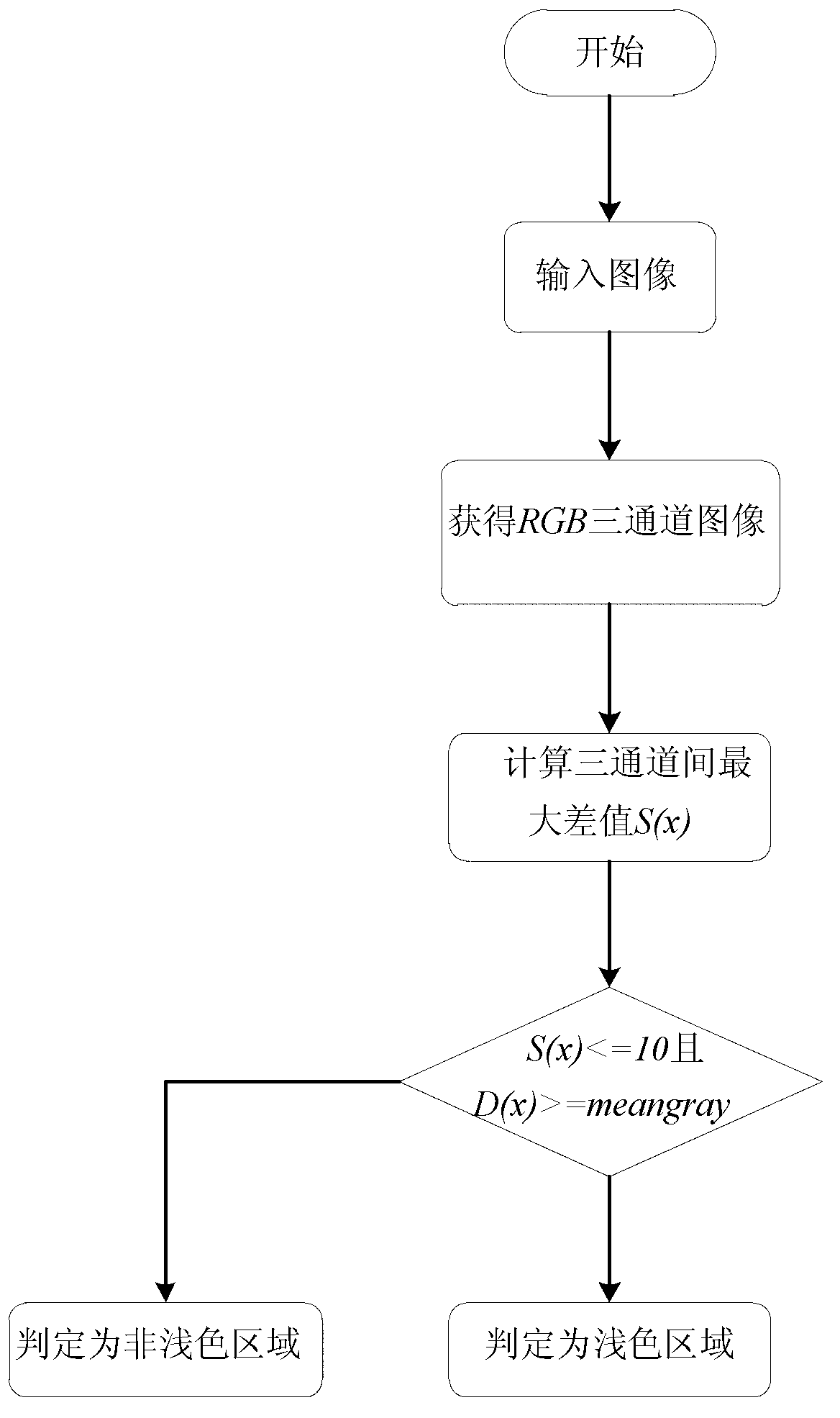Rapid low-illumination image enhancing method based on improved dark channel prior
A dark channel prior and dark channel image technology, applied in the field of fast low-light image enhancement, can solve the problems of poor processing effect, poor real-time performance, and inapplicability of light-colored areas, so as to enhance brightness and contrast, and improve image and video quality Effect
- Summary
- Abstract
- Description
- Claims
- Application Information
AI Technical Summary
Problems solved by technology
Method used
Image
Examples
specific Embodiment approach 1
[0030] Specific Embodiment 1: The fast low-light image enhancement method with improved dark channel prior in this embodiment includes the following steps:
[0031] Step 1: Input the image I(i,j), obtain the size of the image I(i,j) as w*h, and the RGB three-channel image IR(i,j), IG(i ,j), IB(i,j), where w is the width of the image, h is the height of the image, IR(i,j), IG(i,j), and IB(i,j) are the red and green colors of the image respectively blue three-channel image;
[0032] Step 2: For each pixel of the image I(i,j), find the minimum value in the grayscale of the RGB three-channel images IR(i,j), IG(i,j), and IB(i,j), Recorded as Imin(i, j), the calculation formula is as follows:
[0033] I min ( i , j ) = min c ∈ { R , G ...
specific Embodiment approach 2
[0089] Specific embodiment two: the difference between this embodiment and the specific embodiment is: the method for judging the light-colored area in the image in step four is:
[0090] A. The absolute value of the difference between the gray levels of the three RGB channels is less than 5;
[0091] B. The dark channel gray value corresponding to the pixel is greater than the average dark channel gray value meanray;
[0092] C. The dark channel gray value corresponding to the pixel is less than half maxgray / 2 of the maximum dark channel gray value. Other steps and parameters are the same as those in Embodiment 1.
specific Embodiment approach 3
[0093] Specific implementation mode three: the difference between this implementation mode and specific implementation mode one or two is that: the steps of performing linear smoothing on the modified dark channel image in step five are as follows:
[0094] a, determine the size of the window used to smooth the dark channel image according to the size of the image I (i, j);
[0095] b. Calculate the parameter a of the linear approximation for each window k and b k ;
[0096] c. Approximate parameter a for all windows containing each pixel k and b k Perform an average to obtain the approximate parameters after the average;
[0097] d. Carry out linear approximation to the image with the approximation parameters after the average;
[0098] Among them, the formula for linearly smoothing the modified dark channel image is: For a window W with a size of M*M centered on point k k All pixels within x:E x =a k D. x +b k , M=N-2, N is the size of the window used when obtainin...
PUM
 Login to View More
Login to View More Abstract
Description
Claims
Application Information
 Login to View More
Login to View More - R&D
- Intellectual Property
- Life Sciences
- Materials
- Tech Scout
- Unparalleled Data Quality
- Higher Quality Content
- 60% Fewer Hallucinations
Browse by: Latest US Patents, China's latest patents, Technical Efficacy Thesaurus, Application Domain, Technology Topic, Popular Technical Reports.
© 2025 PatSnap. All rights reserved.Legal|Privacy policy|Modern Slavery Act Transparency Statement|Sitemap|About US| Contact US: help@patsnap.com



